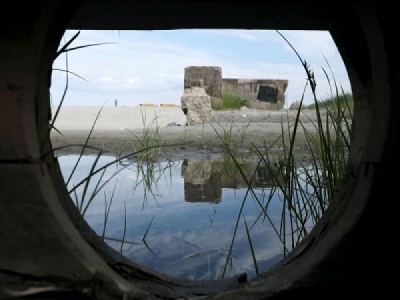
Posted on September 18, 2017
By Nanette LoBiondo Galloway, ShoreNewsToday
The U.S. Army Corps of Engineers has agreed to install a drainage pipe system under the new sand dune in Margate, according to a consent order.
The order confirming an agreement between the city, the Army Corps and the state Department of Environmental Protection will require the Army Corps to design, construct and fund an alternative drainage system. In return, Margate will withdraw its lawsuit against the state and federal governments.
The consent order was presented Sept. 12 to U.S. District Court Judge Renee Bumb, who signed it later in the day.
Mayor Michael Becker called the agreement “a big win for Margate.” Becker said the agreement calls for the Army Corps to install a lateral pipe across the entirety of the city’s beach bulkhead, with five 48-inch outfall pipes that will drain storm water to the ocean. A precast concrete inlet will collect storm water at existing scuppers. The outfalls will be located at Brunswick, Granville, Lancaster and Vendome avenues, in addition to the one that already exists at Monroe Avenue. They will be completely covered by the sand dune and berm system, he said.
“The big picture is that they agreed that short-term solutions were not working,” Becker said. Although the city did not win its lawsuit to stop the dunes from being built, “we move forward,” he said.
But Margate Citizens Questioning the Beach Project Executive Director Dan Gottlieb, who led the group to stop the dune from being built, called the drainage system “the continued ‘industrialization’ of what was a beautiful and unbroken beach.”
“With massive steel outfall pipes, we’re now faced with a problem that didn’t have to happen, and this solution is unsightly and has potential public safety consequences,” Gottlieb said.
A separate consent order has been sent to Atlantic County Superior Court Judge Julio Mendez for his consideration, according to Margate attorney Jordan Rand.
“While there is still considerable work to be done, I cannot overstate my admiration for the city officials who so ferociously advocated for their residents,” Rand said. “This resolution, however, was also the result of cooperation at all three levels of government, city, state and federal. I commend all involved for taking this problem seriously and committing to do what it takes to resolve it.”
Mendez had issued a temporary restraining order Aug. 3 halting the project after standing bodies of water from two rainstorms blocked beach access and caused lifeguards to develop rashes. He ordered the parties to come to the table every day if necessary to solve Margate’s drainage issues.
Bumb later modified the restraining order, allowing the project to continue, but with conditions, such as improving beach access, draining and testing any standing water and installing safety fences around ponds.
The contractor has since filled in excavated areas between the toe of the dune and the bulkhead, and installed temporary sump pits that allow water to percolate.
The agreement states that the Army Corps will design a manifold and outfall storm water collection system seaward of the city’s existing bulkhead system and that it will be paid for with federal funds allocated for the dune project.
City engineer Ed Walberg’s conceptual design plan, which the Army Corps last year said was too expensive to implement, put the cost of the project at about $10 million.
Gottlieb said the agreement confirms the Army Corps and DEP “never adequately understood the problem they were creating with their lack of an effective drainage system like the simple and effective system which Margate had in place for decades.”
The parties have been meeting for weeks to achieve the long-term solution to the drainage and safety concerns identified in the city’s lawsuit.
Margate officials and residents testified in court that the city’s existing storm water drainage system would present problems if the dune wall was built, and that the city’s border-to-border bulkhead system would provide enough protection during storms. Most of the city’s flooding issues come from the bay side, they said.
The engineered beach is part of Gov. Chris Christie’s storm protection plan to build one contiguous sand dune the entire length of the state.
The drainage system will be completed over the winter, Becker said.
“It has to be done by May 2018,” he said.
After more than three years of wrangling at a cost to taxpayers of $350,000, Becker said he has developed a positive outlook on the situation.
“I am accessible to the people of Margate, and I hear what they are saying. But they are calming down now, and all our problems will work out. By next summer, we should be OK.”
Source: ShoreNewsToday





